7 In-Situ Density
Introduction
The dry density of the compacted soil or pavement material is a common measure of the amount of compaction achieved during construction. It can be calculated from the field density and field moisture content data; therefore, field density or the in-situ density test is an important field control test for the compaction of soil or any other pavement layers.
The in-situ density of material is determined by the weight of the excavated material divided by the in-situ volume. The volume of the excavated hole can be determined from the weight of sand with known density filling in the hole. There are several methods for determining the field density of soils: core cutter method, sand replacement method, rubber balloon method, heavy oil method, etc. The sand replacement test is simple and is the most popular method, and it is followed in this manual.
Practical Application
- In-situ density is widely used to control the field compaction of earthworks and pavement layers.
- Knowing the field density of the soil enables the estimation of the soil-bearing capacity, evaluation of the pressure on underlying strata, and computation of the settlement and stability of a natural slope.
Objective
The objective of this experiment is
- To determine the in-situ density of soil using the sand replacement method.
Equipment
- Sand cone apparatus
- Base plate
- Tools for excavating a hole in the ground
- Proctor compaction model
- Balance
Standard Reference
- ASTM D1556: Standard Test Method for Density and Unit Weight of Soil in Place by Sand-Cone Method
Method
Calibration of sand cone apparatus
- Measure the weight of the Proctor mold + base, W1
- Pour the sand into the compaction mold and level off the surface, being careful not to disturb the mold, as that might rearrange the sand and cause it to become compacted. Measure the weight of Proctor mold + base + sand, W2
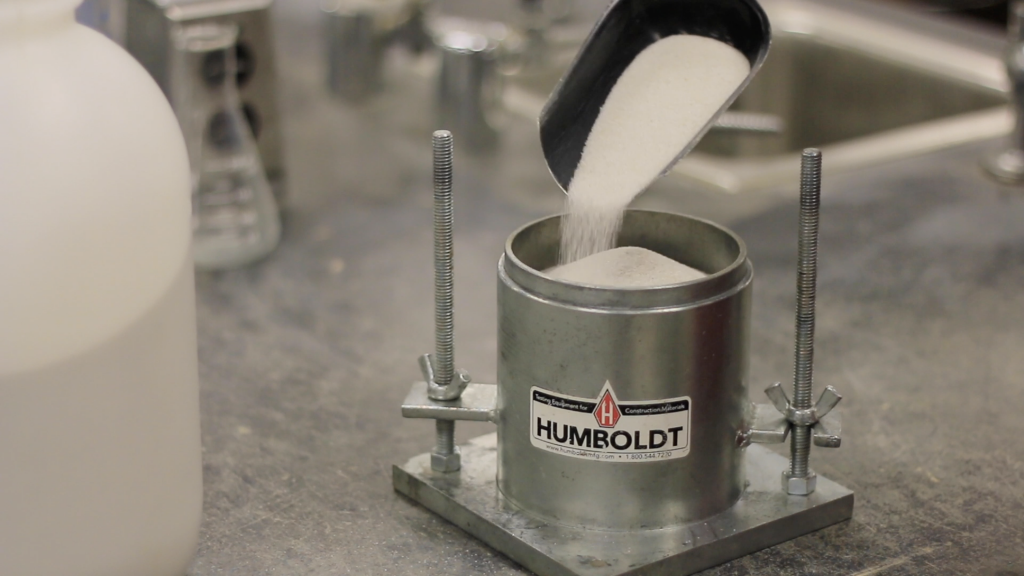
Figure 7.1: Pouring the sand into the compaction mold - Measure the weight of the plastic gallon container + cone + sand, W3 (before use)
- Close the valve that is attached to the cone. Turn the cone and gallon container upside down on the tray and open the valve so that the sand flows from the container to the cone. After the flow stops, close the valve, and take the gallon + cone from the tray. Measure the weight of the plastic gallon + cone + sand, W4 (after use)
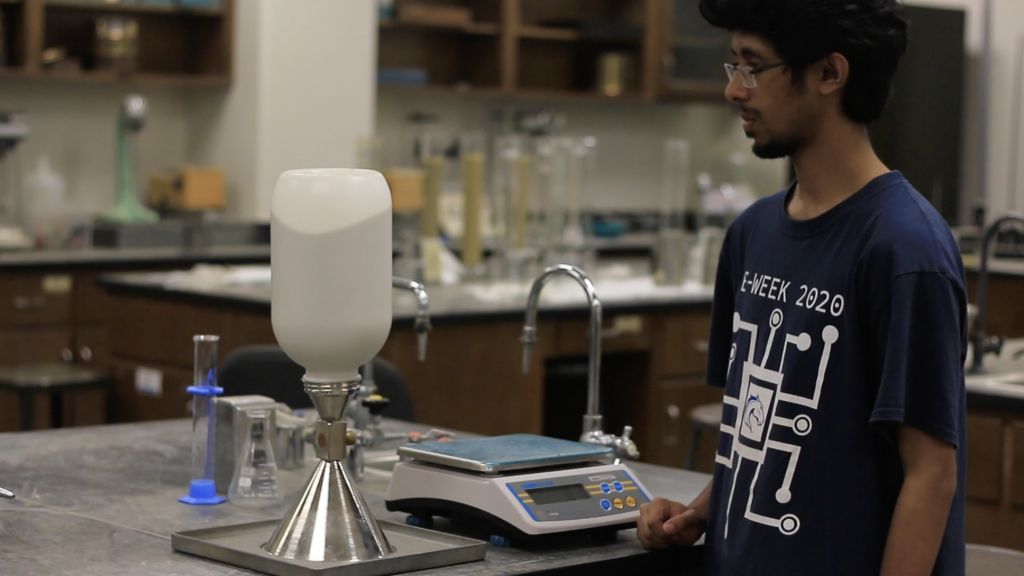
Figure 7.2: Calibration of the sand cone apparatus - Measure the weight of the plastic gallon + cone + sand, W5 (before use)
Field in-situ density test
- In the field where the soil’s unit weight is to be measured, position the metal tray and fasten the four screws.
Dig a 10 to 15 cm deep hole and put the retrieved soil, including the soft soil at the bottom of the hole, into a plastic bag to prevent a loss of moisture.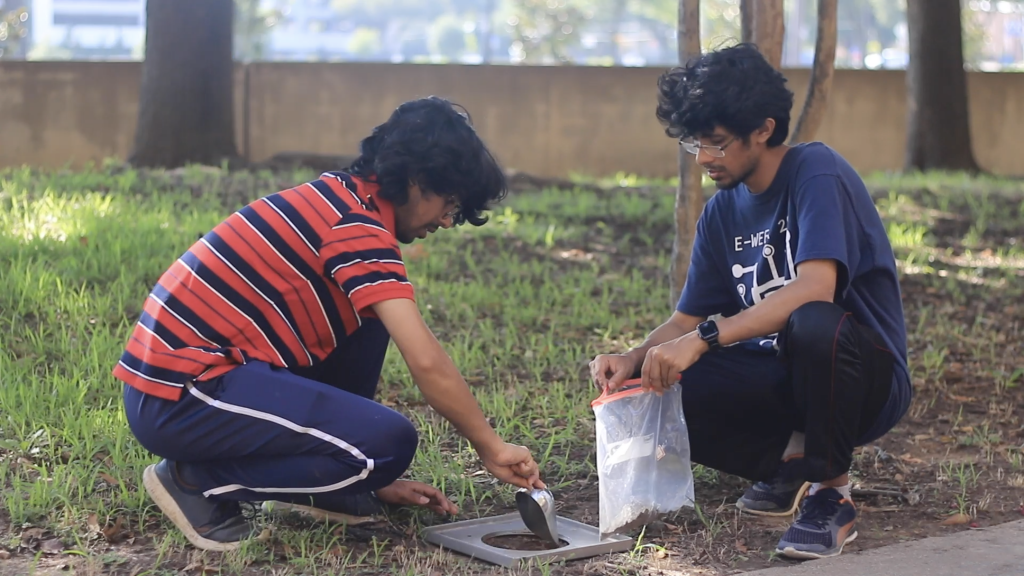
Figure 7.3: Collection of the soil sample from the hole - With the valve closed, turn the gallon + cone upside down, place the cone in the center hole of the tray, and open the valve so that the sand flows down to the hole.
- After the flow of sand stops, close the valve, and pick up the assembly. Pour the sand in the cone into the tray and leave it in the field.
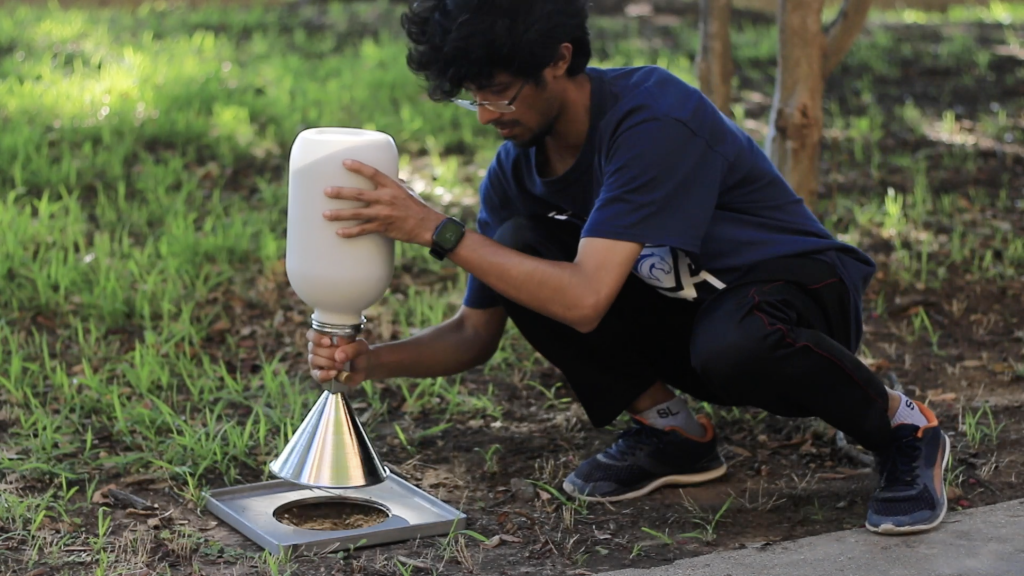
Figure 7.4: Placement of sand cone apparatus above the hole - Measure the weight of the plastic gallon + cone + sand, W6 (after use)
- Measure the weight of the evaporating dish, W7
- Measure the weight of the evaporating dish + wet soil from the field, W8
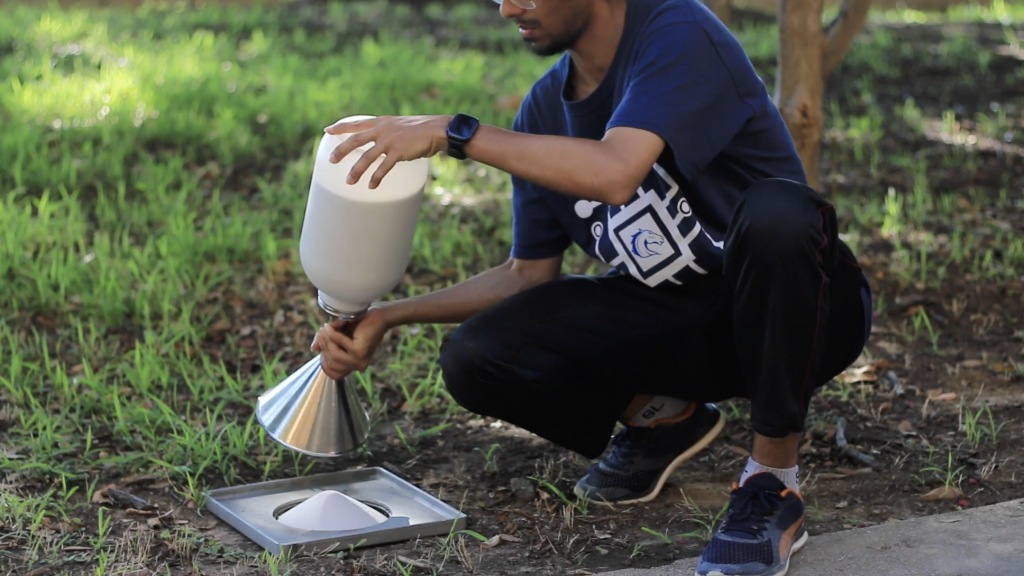
Figure 7.5: Removing the sand cone apparatus after filling the hole with standard sand - Put the evaporating dish + wet soil in the oven for 24 hrs., then weigh it again, W9
- Perform the calculations, using the data you have entered into the table.
Video Materials
Lecture Video
A PowerPoint presentation is created to understand the background and method of this experiment.
Demonstration Video
A short video is executed to demonstrate the experiment procedure and sample calculation.
Results and Discussions
Sample Data Sheet
![Rendered by QuickLaTeX.com \begin{tabular}{|l|c|c|} \hline \textbf{Test Steps} & \textbf{Quantity} & \textbf{Unit} \\ \hline \multicolumn{3}{|c|}{\textbf{Obtaining the unit weight of the sand used}} \\ \hline 1. Weight of Proctor mold, $W_1$ & 4.234 & kg \\ \hline 2. Weight of proctor mold + Sand, $W_2$ & 5.982 & kg \\ \hline 3. Volume of the mold, $V_1$ & 0.00095 & m3 \\ \hline 4. Dry unit weight, $\gamma_{d(sand)}$ = ($W_2$ - $W_1$) / $V_1$ & 1840 & kg/$m^3$ \\ \hline \multicolumn{3}{|c|}{\textbf{Calibration cone}} \\ \hline 5. Weight of plastic Gallon + Cone + Sand (before use), $W_3$ & 5.124 & kg \\ \hline 6. Weight of plastic Gallon + Cone + Sand (after use), $W_4$ & 3.965 & kg \\ \hline 7. Weight of the sand to fill the cone, $W_c$ = $W_3$- $W_4$ & 1.159 & kg \\ \hline \multicolumn{3}{|c|}{\textbf{Results from field tests}} \\ \hline 8. Weight of plastic Gallon + Cone + Sand (before use), $W_5$ & 7.854 & kg \\ \hline 9. Weight of plastic Gallon + Cone + Sand (after use), $W_6$ & 4.23 & kg \\ \hline 10. Volume of hole, $V_2$ = ($W_5$-$W_6$-$W_c$)/ $\gamma_{d(sand)}$ & 0.001340 & $m^3$ \\ \hline 11.Weight of plastic bag, $W_7$ & 0.069 & kg \\ \hline 12. Weight of plastic bag + wet soil from the field, $W_8$ & 2.334 & kg \\ \hline 13. Weight of wet soil, $W_9$ = $W_8$-$W_7$ & 2.265 & kg \\ \hline 14. Moist unit weight of the soil in the field, $\gamma_{t(in-situ soil)}$ = $W_9$ / V2 & 1690.71 & kg/$m^3$ \\ \hline 15. Weight of moisture can, $W_{10}$ & 0.056 & kg \\ \hline 16. Weight of moisture can + wet soil, $W_{11}$ & 0.162 & kg \\ \hline 17. Weight of moisture can + dry soil after 24 hrs., $W_{12}$ & 0.159 & kg \\ \hline 18. Water content in the field, w(\%)= ($W_{11}$ - $W_{12}$) / ($W_{12}$- $W_{10})\times$ 100 & 2.91 & \% \\ \hline 19. Dry unit weight in the field, $\gamma_{d(in-situ soil)}$= {[}t (Row 14){]} / {[}1+ w(\%) / 100{]} & 1642.86 & kg/$m^3$ \\ \hline \end{tabular}](https://uta.pressbooks.pub/app/uploads/quicklatex/quicklatex.com-7c0f5521e002acb8815e94d45339e7c7_l3.png)
Blank Data Sheet
![Rendered by QuickLaTeX.com \begin{tabular}{|l|c|c|} \hline \textbf{Test Steps} & \textbf{Quantity} & \textbf{Unit} \\ \hline \multicolumn{3}{|c|}{\textbf{Obtaining the unit weight of the sand used}} \\ \hline 1. Weight of Proctor mold, $W_1$ & & kg \\ \hline 2. Weight of proctor mold + Sand, $W_2$ & & kg \\ \hline 3. Volume of the mold, $V_1$ & & m3 \\ \hline 4. Dry unit weight, $\gamma_{d(sand)}$ = ($W_2$ - $W_1$) / $V_1$ & & kg/$m^3$ \\ \hline \multicolumn{3}{|c|}{\textbf{Calibration cone}} \\ \hline 5. Weight of plastic Gallon + Cone + Sand (before use), $W_3$ & & kg \\ \hline 6. Weight of plastic Gallon + Cone + Sand (after use), $W_4$ & & kg \\ \hline 7. Weight of the sand to fill the cone, $W_c$ = $W_3$- $W_4$ & & kg \\ \hline \multicolumn{3}{|c|}{\textbf{Results from field tests}} \\ \hline 8. Weight of plastic Gallon + Cone + Sand (before use), $W_5$ & & kg \\ \hline 9. Weight of plastic Gallon + Cone + Sand (after use), $W_6$ & & kg \\ \hline 10. Volume of hole, $V_2$ = ($W_5$-$W_6$-$W_c$)/ $\gamma_{d(sand)}$ & & $m^3$ \\ \hline 11.Weight of plastic bag, $W_7$ & & kg \\ \hline 12. Weight of plastic bag + wet soil from the field, $W_8$ & & kg \\ \hline 13. Weight of wet soil, $W_9$ = $W_8$-$W_7$ & & kg \\ \hline 14. Moist unit weight of the soil in the field, $\gamma_{t(in-situ soil)}$ = $W_9$ / $V_2$ & & kg/$m^3$ \\ \hline 15. Weight of moisture can, $W_{10}$ & & kg \\ \hline 16. Weight of moisture can + wet soil, $W_{11}$ & & kg \\ \hline 17. Weight of moisture can + dry soil after 24 hrs., $W_{12}$ & & kg \\ \hline 18. Water content in the field, w(\%)= ($W_{11}$ - $W_{12}$) / ($W_{12}$- $W_{10})\times$ 100 & & \% \\ \hline 19. Dry unit weight in the field, $\gamma_{d(in-situ soil)}$= {[}t (Row 14){]} / {[}1+ w(\%) / 100{]} & & kg/$m^3$ \\ \hline \end{tabular}](https://uta.pressbooks.pub/app/uploads/quicklatex/quicklatex.com-3eea625e4072b48dbce21a5e4886ecd2_l3.png)
Report
- Objective of the test
- Applications of the test
- Apparatus used
- Test procedures (optional)
- Analysis of test results – Complete the table provided and show one sample calculation. Calibrate the sand cone apparatus and determine the in-situ density and moisture content.
- Summary and conclusions – Comment on the in-situ moisture content and in-situ density of soil obtained from the field.

